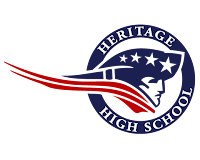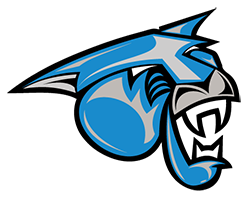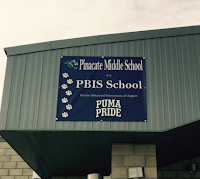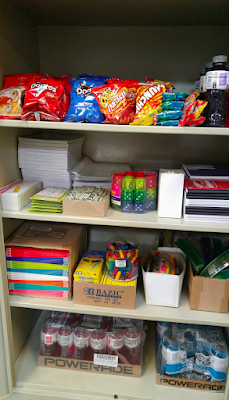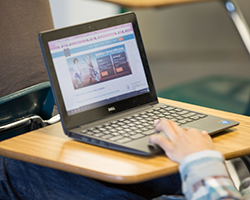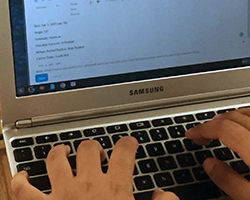Young Students Teach School Board How to Code
In March of the 2015-2016 school year, the Perris Union High School District announced 1 that it will be joining a nine district consortsium partnership with Code.org which will bring professional development and curriculum to teachers and students exposing them to computer science from an early age throughout high school. Computer Science courses provided by the partnership with Code.org will be offered at PUHSD’s school sites in the 2016-2017 school year.
This partnership comes at the recognition of a pivotal shift in today’s job market. It is estimated that by the year 2024, there will be more than one million unfilled computer science related jobs in the U.S.2 Currently, only one in four schools offers computer science even though nine out of ten parents polled around the U.S. stated that they want their students to learn computer science. Computer science drives innovation throughout the U.S. economy but remains marginalized throughout K-12 education (Code.org). PUHSD and eight other districts in the consortium decided not to neglect the responsibility of teaching students computer science.
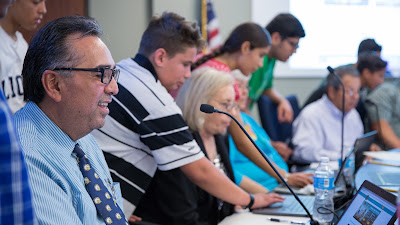 PUHSD began introducing its students to computer science by participating in the international “Hour of Code” event created by Code.org. The purpose of this annual event is to expose students to the world of computer science and generate interest in the field by offering a free web based programming platform that anyone with a computer and internet connection could access. Last year, there were 198,474 Hour of Code events around the world reaching tens of millions of students. Since participating in “Hour of Code”, computer programming clubs began at every school in PUHSD to meet the growing interest among students. This year, Pinacate Middle School offered a technology course that taught multiple computer programming languages to over 500 students. With computer science courses being offered at every school site next school year, 1000’s of PUHSD students will learn to code and this is just the beginning.
PUHSD began introducing its students to computer science by participating in the international “Hour of Code” event created by Code.org. The purpose of this annual event is to expose students to the world of computer science and generate interest in the field by offering a free web based programming platform that anyone with a computer and internet connection could access. Last year, there were 198,474 Hour of Code events around the world reaching tens of millions of students. Since participating in “Hour of Code”, computer programming clubs began at every school in PUHSD to meet the growing interest among students. This year, Pinacate Middle School offered a technology course that taught multiple computer programming languages to over 500 students. With computer science courses being offered at every school site next school year, 1000’s of PUHSD students will learn to code and this is just the beginning.
When PUHSD joined the Code.org consortium, Dr. Greenberg stated, “As we know with coding, young people are teaching people my age how to do it. It’s kind of reverse of what we’ve done in public education in the past having older people teach younger people. What we need to learn in moving into this new age of education is that sometimes young people know more about what they’re doing than older people.” On Wednesday, May 18th, eight students from Pinacate’s technology classes taught district board members how to code during open session. Dr. Greenberg gave an opening address to the board detailing PUHSD’s plans to address the need for more computer programmers in the U.S. and then invited Pinacate’s young programmers to guide school board members through a coding activity. Being led by their teacher Mr. Erik Anderson, the students guided school board members on each member’s Chromebooks to the “Hour of Code” section on Code.org’s website where they first learned to code at the beginning of the school year.
Over the next ten minutes, the young programmers gave clues and tips to their adult students how to program and navigate the BB-8 robot from Star Wars around a field filled with obstacles. The code required started off simple but gradually increased in difficulty. With their young teacher’s help, the board members quickly passed multiple levels. School board President David Neilssen ended the activity with eight complete lessons with board members Edward Agundez, Joan Cooley, Dr. Jose Luis Araux, and Carolyn Twyman not far behind him.
PUHSD’s Governing Board continues to support a world class education that prepares students to be future ready and productive members of society.
1 http://www.puhsd.org/blogs/headlines/posts/perris-union-joins-consortium-to-strengthen-commitment-to-computer-science
2 https://www.whitehouse.gov/blog/2013/12/11/computer-science-everyone
This partnership comes at the recognition of a pivotal shift in today’s job market. It is estimated that by the year 2024, there will be more than one million unfilled computer science related jobs in the U.S.2 Currently, only one in four schools offers computer science even though nine out of ten parents polled around the U.S. stated that they want their students to learn computer science. Computer science drives innovation throughout the U.S. economy but remains marginalized throughout K-12 education (Code.org). PUHSD and eight other districts in the consortium decided not to neglect the responsibility of teaching students computer science.
 PUHSD began introducing its students to computer science by participating in the international “Hour of Code” event created by Code.org. The purpose of this annual event is to expose students to the world of computer science and generate interest in the field by offering a free web based programming platform that anyone with a computer and internet connection could access. Last year, there were 198,474 Hour of Code events around the world reaching tens of millions of students. Since participating in “Hour of Code”, computer programming clubs began at every school in PUHSD to meet the growing interest among students. This year, Pinacate Middle School offered a technology course that taught multiple computer programming languages to over 500 students. With computer science courses being offered at every school site next school year, 1000’s of PUHSD students will learn to code and this is just the beginning.
PUHSD began introducing its students to computer science by participating in the international “Hour of Code” event created by Code.org. The purpose of this annual event is to expose students to the world of computer science and generate interest in the field by offering a free web based programming platform that anyone with a computer and internet connection could access. Last year, there were 198,474 Hour of Code events around the world reaching tens of millions of students. Since participating in “Hour of Code”, computer programming clubs began at every school in PUHSD to meet the growing interest among students. This year, Pinacate Middle School offered a technology course that taught multiple computer programming languages to over 500 students. With computer science courses being offered at every school site next school year, 1000’s of PUHSD students will learn to code and this is just the beginning.When PUHSD joined the Code.org consortium, Dr. Greenberg stated, “As we know with coding, young people are teaching people my age how to do it. It’s kind of reverse of what we’ve done in public education in the past having older people teach younger people. What we need to learn in moving into this new age of education is that sometimes young people know more about what they’re doing than older people.” On Wednesday, May 18th, eight students from Pinacate’s technology classes taught district board members how to code during open session. Dr. Greenberg gave an opening address to the board detailing PUHSD’s plans to address the need for more computer programmers in the U.S. and then invited Pinacate’s young programmers to guide school board members through a coding activity. Being led by their teacher Mr. Erik Anderson, the students guided school board members on each member’s Chromebooks to the “Hour of Code” section on Code.org’s website where they first learned to code at the beginning of the school year.
Over the next ten minutes, the young programmers gave clues and tips to their adult students how to program and navigate the BB-8 robot from Star Wars around a field filled with obstacles. The code required started off simple but gradually increased in difficulty. With their young teacher’s help, the board members quickly passed multiple levels. School board President David Neilssen ended the activity with eight complete lessons with board members Edward Agundez, Joan Cooley, Dr. Jose Luis Araux, and Carolyn Twyman not far behind him.
PUHSD’s Governing Board continues to support a world class education that prepares students to be future ready and productive members of society.
1 http://www.puhsd.org/blogs/headlines/posts/perris-union-joins-consortium-to-strengthen-commitment-to-computer-science
2 https://www.whitehouse.gov/blog/2013/12/11/computer-science-everyone
8:00 AM
coding
,
Pinacate Middle School
,
Technology
Heritage High School - College and Career Readiness
Written by: Frank Arce, Principal, Heritage High School
I have been fortunate to work at many different schools. In my teaching and my administrative career, this is now the sixth high school that I’ve worked at. I have learned that all schools and their personnel; from teachers and classified staff, to counselors and the school administration; work diligently to give students opportunities to be successful in high school and have the opportunities to either pursue higher education or a productive career. We all always talk about a vision in wanting to create “lifelong learners” and promote “civic responsibility” as students become “productive members of our society”. Most schools have a shared mission of getting kids college and career ready. But, only exceptional schools actually have a systematic approach to targeting this specific goal. It’s exceptional schools like these that are driven in their programmatic decisions and meaningful experiences that are planned for students, that truly have a purposeful approach to getting kids ready for college, military, technical careers, or the workforce in general. Heritage High School is this type of exceptional school; Heritage High School is where this vision becomes action.
All students at Heritage High School meet with school counselors well before they embark on their educational journey here. Counselors go out to the middle schools and discuss course options, A-G requirements for UC/CSU admission, and other critical ‘need-to-know” items. Counselors then meet individually with students to formulate a four-year plan based on individual students’ needs. These meetings and periodic check-ins with students take an enormous amount of time. But, our Model of Excellence Award-winning counseling staff know that this is the best way to ensure that students are ready and on-track for success. This is the Heritage Way.
Teachers play a critical role in aligning our goals for college and career readiness, with classroom standards for academics and social skills that are conducive to success. Every student at Heritage High School is in a Freshman Foundations class or an AVID 9 section. The class is meant to teach specific strategies that will help students with study habits and general high school expectations. At Heritage High School, we took this to another level. Each of our Foundations and Freshmen AVID sections are separated into teams. These teams compete against each other for positive school connectedness and engagement points. Students are given participation points as a class for being involved in a variety of on-campus activities and events. These can be anything from a football night tailgate barbecue, to our annual Back to School Night. Research indicates that student’s meaningful connections are critical to student success, and this Foundations class is a great way to target student involvement. Programs like LinkCrew, PLUS, and ASB also foster opportunities for social/academic skills development and high school success. It is the combination of all these programs, the genius of “and” versus the tyranny of “or”, that helps create a formula for academic success.
It is also imperative to have choices for students in different pathways. The recently-adopted districtwide seven period schedule is a great way to ensure that students have equitable access to the curriculum. Students now have more opportunities to enroll in Fine Arts, World Languages, AP classes, Engineering classes, and other courses that would otherwise be limited with a shorter schedule. This was a great move towards students success. However, at Heritage High School, it is the variety of programs and pathways that continue to further drive student success. Heritage High School has a renowned and award-winning Agriculture/FFA program, with a pathway aligned to college admission. We are also building up our Project Lead The Way Biomedical Program, as well as Engineering. As an AVID National Demonstration school, the HHS AVID Site team works tirelessly to make sure that students are exposed to successful learning strategies and have access to college planning resources.
The African proverb - “It takes a village to raise a child” - is a philosophy that Heritage High School subscribes to at the core of what we do. People at Heritage High School are constantly thinking up more ways to reach students and promote college and career readiness. We continue to build on this vision from the bottom-up. Heritage High School staff doesn’t wait to ask WHY we should help students; they take action towards the HOW to achieve success.
A Four Year Plan
 |
| CC BY 2.0 flickr.com/photos/dafnecholet/5374200948 |
A Strong Foundation
 |
| CC BY-SA 3.0 Daniel Case |
Choice in Pathways and Successful Programs
 |
| CC BY-SA 2.0 Des Blenkinsopp |
Events and Activities
Students at Heritage High School were all met from day one with lessons in planning for college and career readiness. Our Camp Legacy model, a one-day introduction to the school year with lessons on social and academic skills-building, is meant to frontload students with strategies and expectations that are needed to prepare for real-world applications of knowledge and skills. Throughout the year, we have Ag/FFA nights, AVID Parent Nights, College Fair, and other opportunities for students and their parents to engage in the learning process and plan for a college and career future. We are also in the beginning stages of planning a Career Fair and a STEM (Science, Technology, Engineering, and Mathematics) community night. Student events such as the College Kickoff Day, College Application Night, and the FAFSA (Free Application for Federal Student Aid) Night are all staff-guided events to help students prepare for higher education. Clubs and organizations like Key Club, Interact, National Honors Society, and others also contribute by fostering opportunities for community service and college awareness.A LEGACY
One of the very unique aspects about Heritage High School is the building of a LEGACY cohort of students. LEGACY is modeled after our motto - Leadership, Excellence, Generosity, Academics, Character, and opportunitY. Our LEGACY students are on track to meet A-G requirements. Counselors meet with them individually and also pull out students for informational sessions. The goal is to move more and more students towards the LEGACY track and continue to prepare students for College and Career Readiness.The African proverb - “It takes a village to raise a child” - is a philosophy that Heritage High School subscribes to at the core of what we do. People at Heritage High School are constantly thinking up more ways to reach students and promote college and career readiness. We continue to build on this vision from the bottom-up. Heritage High School staff doesn’t wait to ask WHY we should help students; they take action towards the HOW to achieve success.
7:00 AM
Career
,
College
,
Heritage High School
PBIS at Pinacate: Putting the "P" in Positive
PBIS stands for Positive Behavioral Interventions and Supports. It is a framework for how schools plan to improve school culture and discipline practices. This year, Pinacate Middle School has revamped their PBIS system, putting the “P” in “Positive”.
The school year began with 3 days of school-wide instruction on social skills. Every teacher at Pinacate in every class period, explicitly taught lessons on how to use and practice social skills. These lessons were developed by Pinacate’s PBIS committee. Some of these social skills include working well with others, accepting ‘No’ for an answer, using appropriate voice tone, and greeting others. Students learned how to apply 21 different social skills in various settings, especially a classroom setting. Rather than focusing on what not to do, social skills are worded positively in order to reinforce what the right action is to take in a situation. In this way, students have been explicitly taught how to act like responsible young adults and what positive behavior looks like.
Another positive change this year is the establishment of the Student Success Center. This room replaced the existing On Campus Suspension (OCS) room and is located in Pinacate’s discipline office. The Student Success Center (SSC) is staffed by a full time credentialed teacher. This teacher’s title is the “SSC Teacher”. If a student is showing repeated misbehavior, and after all classroom interventions have been tried, a teacher can refer a student to the Student Success Center. The SSC teacher meets with and counsels the student regarding the student’s misbehavior and the social skill(s) he/she has failed to practice. The SSC teacher then sets up a Teacher/Student Conference with the referring teacher. In this conference, the student is given an opportunity to “own up” to his/her behavior and commits to what behaviors he/she will change in the classroom. The teacher has a chance to talk to the student face-to-face, without other students around, and let the student know what is expected of them in the classroom. In a Teacher/Student Conference, the SSC teacher acts as a facilitator, ensuring that the student understands what the teacher is communicating. In these conferences, the SSC teacher also communicates to the student what the next steps are in the discipline procedures should the student’s behavior fail to change after the conference.
Teacher/Student Conferences have been successful in decreasing repeated referrals. Over half of the students who have had a Teacher/Student Conference with a teacher have not been referred to the discipline office again by that same teacher. The face-to-face conference with the referring teacher and the SSC teacher requires students to have a real and honest conversation about their behavior. Often times, teacher and student relationships are restored from these conferences, and misunderstandings between teachers and students are made clear.
To reinforce the practice of using proper social skills, a behavior tracking system was purchased. Pinacate is using a software platform to track positive behavior in the classroom. Teachers were trained on how to use the software and how to award students “Puma Points” for effectively practicing social skills in the classroom. Students also have been shown how to create a student account. Once they log in to their student account, students are able to check how many points they have earned, how many they’ve spent, and which teachers have awarded them points.
The students can spend these points at the newly opened Student Incentive Store. The Incentive Store is located in the Student Success Center. Various school supplies and snacks are sold during students’ lunches at the incentive store. The store opened on November 10, 2015. Since that time, over 200 students have visited and purchased items from the store using their Puma Points. On one particular day, over 45 students purchased items at the store during their lunches. As the school year progresses Pinacate is looking to see the number of students visiting the Incentive Store to grow.
What is next for PBIS at Pinacate? Next semester, every campus supervisor will have a portable device to track student behavior, both positive and negative. Tardy sweeps will take place where campus supervisors will use their devices to issue tardy passes using the behavior tracking system. One tardy equals a loss of one Puma Point. This will help motivate students to get to class on time. Also, campus supervisors will be looking for students who are being good role models around campus. These students will be awarded Puma Points for demonstrating positive behavior.
Pinacate Middle School continues to improve its PBIS framework. The PBIS committee meets monthly to discuss needed changes and tweaks to the system. All teachers are invited to have a voice on the PBIS committee. The committee has worked diligently to develop a school-wide PBIS framework that will be sustainable, data driven, and has an emphasis on positive intervention.
The school year began with 3 days of school-wide instruction on social skills. Every teacher at Pinacate in every class period, explicitly taught lessons on how to use and practice social skills. These lessons were developed by Pinacate’s PBIS committee. Some of these social skills include working well with others, accepting ‘No’ for an answer, using appropriate voice tone, and greeting others. Students learned how to apply 21 different social skills in various settings, especially a classroom setting. Rather than focusing on what not to do, social skills are worded positively in order to reinforce what the right action is to take in a situation. In this way, students have been explicitly taught how to act like responsible young adults and what positive behavior looks like.
Another positive change this year is the establishment of the Student Success Center. This room replaced the existing On Campus Suspension (OCS) room and is located in Pinacate’s discipline office. The Student Success Center (SSC) is staffed by a full time credentialed teacher. This teacher’s title is the “SSC Teacher”. If a student is showing repeated misbehavior, and after all classroom interventions have been tried, a teacher can refer a student to the Student Success Center. The SSC teacher meets with and counsels the student regarding the student’s misbehavior and the social skill(s) he/she has failed to practice. The SSC teacher then sets up a Teacher/Student Conference with the referring teacher. In this conference, the student is given an opportunity to “own up” to his/her behavior and commits to what behaviors he/she will change in the classroom. The teacher has a chance to talk to the student face-to-face, without other students around, and let the student know what is expected of them in the classroom. In a Teacher/Student Conference, the SSC teacher acts as a facilitator, ensuring that the student understands what the teacher is communicating. In these conferences, the SSC teacher also communicates to the student what the next steps are in the discipline procedures should the student’s behavior fail to change after the conference.
Teacher/Student Conferences have been successful in decreasing repeated referrals. Over half of the students who have had a Teacher/Student Conference with a teacher have not been referred to the discipline office again by that same teacher. The face-to-face conference with the referring teacher and the SSC teacher requires students to have a real and honest conversation about their behavior. Often times, teacher and student relationships are restored from these conferences, and misunderstandings between teachers and students are made clear.
To reinforce the practice of using proper social skills, a behavior tracking system was purchased. Pinacate is using a software platform to track positive behavior in the classroom. Teachers were trained on how to use the software and how to award students “Puma Points” for effectively practicing social skills in the classroom. Students also have been shown how to create a student account. Once they log in to their student account, students are able to check how many points they have earned, how many they’ve spent, and which teachers have awarded them points.
The students can spend these points at the newly opened Student Incentive Store. The Incentive Store is located in the Student Success Center. Various school supplies and snacks are sold during students’ lunches at the incentive store. The store opened on November 10, 2015. Since that time, over 200 students have visited and purchased items from the store using their Puma Points. On one particular day, over 45 students purchased items at the store during their lunches. As the school year progresses Pinacate is looking to see the number of students visiting the Incentive Store to grow.
What is next for PBIS at Pinacate? Next semester, every campus supervisor will have a portable device to track student behavior, both positive and negative. Tardy sweeps will take place where campus supervisors will use their devices to issue tardy passes using the behavior tracking system. One tardy equals a loss of one Puma Point. This will help motivate students to get to class on time. Also, campus supervisors will be looking for students who are being good role models around campus. These students will be awarded Puma Points for demonstrating positive behavior.
Pinacate Middle School continues to improve its PBIS framework. The PBIS committee meets monthly to discuss needed changes and tweaks to the system. All teachers are invited to have a voice on the PBIS committee. The committee has worked diligently to develop a school-wide PBIS framework that will be sustainable, data driven, and has an emphasis on positive intervention.
7:00 AM
Pinacate Middle School
Unlocking Genius: One Special Needs Student at a Time
Written by: Chad Shaner
Curiosity took the better of me as I walked by Ms. Post’s moderate to severe functional skills class one recent afternoon. A quick glance revealed smiling students glued to Chromebook screens; one student clapping joyfully at his desk while others seemed unphased by his antics. Rachel Post, one of our special education teachers at Perris High School teaches a self-contained functional skills class for students with moderate to severe disabilities. Somebody who might not have known better might assume that students were cheering at an entertaining video on their Chromebooks, but knowing Ms. Post, I knew that wasn’t the case. Upon closer inspection, I saw visual coding blocks displayed on the overhead projector, and I knew I had to step inside.
Ms. Post excitedly told me that her students were using tynker.com, an online visual coding website that teaches kids basic programming logic through a drag and drop interface. What makes Tynker great is the gamified aspect, taking students through levels of greater complexity using compelling characters that the user navigates through a series of obstacles. Ms. Post’s students were fully engaged in the activity, challenging one another to see who could pass the next level first. I was enthralled that these students were learning basic computer science and had the ability to understand the logic behind the coding blocks, but I was not surprised. Having taught a special education computer applications class for several years, I know that many students with intellectual disabilities have talents that are locked away given a traditional classroom setting. But given the right tools and proper guidance, these students can blow you away with what they can create.
According to the United States 2010 Census, approximately 2.4% of school-aged children in Southern California have a cognitive disability, defined as a child having serious difficulty concentrating, remembering, or making decisions. Given these statistics, it’s not difficult to see why these students represent an often forgotten and underserved population. Despite these challenges, special needs students in the Perris Union High School District are granted access to technology tools that minimize accessibility gaps and unlock hidden potentials. In addition to free online sources like Tynker, Ms. Post uses Khan Academy to help her students learn basic math facts, and text-to-speech Chrome extensions like SpeakIt! to make text accessible to her students.
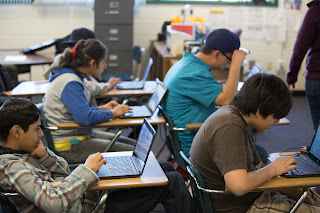
Some might question the value of teaching introductory computer programming to students with intellectual disabilities, perhaps assuming that these students would never have the capability of becoming professional software engineers or game designers. I beg to differ. Many scholars have speculated on the presence of intellectual and psychological disabilities amongst some of the world’s greatest geniuses. In today’s app-driven world, all it takes is the release of a simple smart-phone game (case in point, Flappy Bird), to turn someone with a little coding knowledge into an instant millionaire. Regardless of disability, socioeconomic status, race, or gender, all it takes is a little knowledge, patient guidance, and access to technology to unlock anyone’s potential genius. Ms. Post told me that once her students get good enough at the guided games on Tynker, they will start moving on to designing their own games using platforms like Scratch. Don’t tell Ms. Post’s students that they can’t learn computer programming. They’re already doing it!
Chad Shaner served as a special education teacher for 15 years and currently serves Perris High School as an educational technology coach. Find him on Twitter: @Chad_Shaner
Curiosity took the better of me as I walked by Ms. Post’s moderate to severe functional skills class one recent afternoon. A quick glance revealed smiling students glued to Chromebook screens; one student clapping joyfully at his desk while others seemed unphased by his antics. Rachel Post, one of our special education teachers at Perris High School teaches a self-contained functional skills class for students with moderate to severe disabilities. Somebody who might not have known better might assume that students were cheering at an entertaining video on their Chromebooks, but knowing Ms. Post, I knew that wasn’t the case. Upon closer inspection, I saw visual coding blocks displayed on the overhead projector, and I knew I had to step inside.
Ms. Post excitedly told me that her students were using tynker.com, an online visual coding website that teaches kids basic programming logic through a drag and drop interface. What makes Tynker great is the gamified aspect, taking students through levels of greater complexity using compelling characters that the user navigates through a series of obstacles. Ms. Post’s students were fully engaged in the activity, challenging one another to see who could pass the next level first. I was enthralled that these students were learning basic computer science and had the ability to understand the logic behind the coding blocks, but I was not surprised. Having taught a special education computer applications class for several years, I know that many students with intellectual disabilities have talents that are locked away given a traditional classroom setting. But given the right tools and proper guidance, these students can blow you away with what they can create.
According to the United States 2010 Census, approximately 2.4% of school-aged children in Southern California have a cognitive disability, defined as a child having serious difficulty concentrating, remembering, or making decisions. Given these statistics, it’s not difficult to see why these students represent an often forgotten and underserved population. Despite these challenges, special needs students in the Perris Union High School District are granted access to technology tools that minimize accessibility gaps and unlock hidden potentials. In addition to free online sources like Tynker, Ms. Post uses Khan Academy to help her students learn basic math facts, and text-to-speech Chrome extensions like SpeakIt! to make text accessible to her students.

Some might question the value of teaching introductory computer programming to students with intellectual disabilities, perhaps assuming that these students would never have the capability of becoming professional software engineers or game designers. I beg to differ. Many scholars have speculated on the presence of intellectual and psychological disabilities amongst some of the world’s greatest geniuses. In today’s app-driven world, all it takes is the release of a simple smart-phone game (case in point, Flappy Bird), to turn someone with a little coding knowledge into an instant millionaire. Regardless of disability, socioeconomic status, race, or gender, all it takes is a little knowledge, patient guidance, and access to technology to unlock anyone’s potential genius. Ms. Post told me that once her students get good enough at the guided games on Tynker, they will start moving on to designing their own games using platforms like Scratch. Don’t tell Ms. Post’s students that they can’t learn computer programming. They’re already doing it!
Chad Shaner served as a special education teacher for 15 years and currently serves Perris High School as an educational technology coach. Find him on Twitter: @Chad_Shaner
2:03 PM
Perris High School
,
Special Education
Digital Journalism at The Lake
The newspaper, Nest Times at Perris Lake, has been using its current format for the past 2 years. Using Haiku's Wiki Project forum, the students create individual ‘projects’ where they incorporate videos, links, text, and photos to create ‘mini’ Haiku pages on their selected topics. These pages are then reviewed by the Instructor, and edited, before the pages are copied to the main public page of the Nest Times.
Why go digital you may ask? Well, in these difficult times, schools, classes, and teachers are always striving for ways to provide opportunities for the students, but still stay within a budget. Going digital was the obvious answer for Perris Lake High School. Working closely with the Tech TOSA, the instructor was able to set up the basic structure of the online structure that exists today. As a teacher new to the district, the instructor had been on a learning curve with her students, and together they have explored many subjects. Along the way the students have learned to be more comfortable with the possibilities the Chromebook opens to them. They have learned to discern which websites provide the most current, reliable information, and which sites are best left alone. They have learned to explain their research to a casual observer and to give details to how it will be applied to their current article/project they are working on.
Students are allowed to pick their own topics, as long as they’re school appropriate. With a small class ranging from 11 - 25, and with students that stay on campus for only a maximum of two years, it is important to tap into the interests and concerns of these students while they are here. Their tastes are very eclectic. The first term projects were done in groups. While it generated positive results, switching to an individual format allowed students to focus more on their topics; it also provided a wider variety of information, topics, and ideas. Students are given the ‘rights’ to look at each other’s projects to generate ideas and to help each other when requested. Some students, who have been in Journalism in previous terms, are now proficient enough to help educate others. These students have become leaders within the class. At times, they have also helped to edit pages for final publication.
 |
| Collaboration on story ideas |
 Feedback from the site has not been set up yet. Some teachers have been generous with their praise, and their comments have been appreciated! In the near future, The Nest will be setting up ways to provide more accurate feedback. We are also looking to, perhaps, take requests on additional topics and materials the readers wish to see in the ‘paper’. In addition, the Nest has been exploring options to draw more attention to the Newspaper’s site - perhaps a specially designed icon, or a more interesting form to draw attention to the paper when individuals are visiting and perusing the Perris Lake High School home page. Next steps include establishing a Twitter account, attaching a link to the current Facebook account for PLHS, and to incorporate announcements that students will make daily. We wish to create a more socially savvy connection for both students and the community. The staff is also planning to learn more about Haiku and investigate new ways to enhance the paper and organize it to become a more fluid site that is easier to navigate.
Feedback from the site has not been set up yet. Some teachers have been generous with their praise, and their comments have been appreciated! In the near future, The Nest will be setting up ways to provide more accurate feedback. We are also looking to, perhaps, take requests on additional topics and materials the readers wish to see in the ‘paper’. In addition, the Nest has been exploring options to draw more attention to the Newspaper’s site - perhaps a specially designed icon, or a more interesting form to draw attention to the paper when individuals are visiting and perusing the Perris Lake High School home page. Next steps include establishing a Twitter account, attaching a link to the current Facebook account for PLHS, and to incorporate announcements that students will make daily. We wish to create a more socially savvy connection for both students and the community. The staff is also planning to learn more about Haiku and investigate new ways to enhance the paper and organize it to become a more fluid site that is easier to navigate.The team of teachers at Perris Lake High School are always striving for new ways to connect with their students and create an environment that is supportive and nurturing. Their online newspaper is another way to ‘hear’ the voice of the students and give them their own unique voice through written expression.
10:07 AM
Perris Lake High School
,
ScholarPlus
,
School Programs
Introducing Gabriela Zimmerman, Superstar Teacher at the Academy
It is with great pleasure that Perris Union High School District introduces Mrs. Gabriela Zimmerman, Social Science Intern for the Academy Community Day School. This is Gabriela’s first year as an intern. She has, however, substitute taught at the Academy for three years prior to entering a teaching credential program. She earned her Bachelor of Arts degree in History from CSU Dominguez Hills and is currently attending National University to earn her Teaching Credential in Social Science and Masters of Arts in Education.
Gabriela was raised in a single parent household. She is one of three children. After her father left when Gabriela was 12, her mother had to support the family on her own. With a middle school education, her mother had to work constantly and had little time for the family. Oftentimes, the children were left on their own. Gabriela’s older sister tried to take the role of parent, but eventually she left to attend college. Despite these obstacles, Gabriela and her siblings achieved great success. Her older sister entered the field of education, and is currently a teacher in the Greater Los Angeles area. Her younger brother entered the military.
Gabriela had her challenges growing up. Yet, she took these challenges as opportunities to grow. Gabriela’s older sister was a great role model and inspiration. When her sister left for college, Gabriela became motivated to do the same. She wanted to be just like her big sister.
Gabriela decided that she wanted to help students that “needed a little extra support and attention”. She also wanted to share her love for history with others. She no sooner found herself at the Academy Community Day School in the Perris Union High School District.
Gabriela hopes that students realize that it is never too late to change. She encourages students to achieve their goals in life. She stated that they do not have “to attend college or become doctors, but just get their life in order and become productive citizens of society.” Further, Gabriela stated that “I want students to find happiness in whatever they choose to become”.
When asked what she loves most about her job Gabriela explained, she loves the flexibility of getting to know the students. In addition, she explained that she loves being able to work closely with her principal to improve the school.
Currently, Gabriela is the Title I Lead, the English Learner (EL) Lead, and the Parent Engagement Leadership Initiative (PELI) Lead at the Academy. She assists in improving parent engagement at the site and district level. She recently participated in the district’s first Latino Family Literacy College Readiness session on November 3, 2015. She is always willing to help students by offering her time to reteach, tutor or counsel them. Her efforts have not gone unnoticed. Gabriela was honored as the Certificated Employee of the month during September 2015.
Gabriela is genuine, passionate, courageous, valiant and graceful. She exemplifies great teaching. She is a role model to our students, staff, parents and district. Through her actions, she conveys the message that if she made it, they too can make it. We are proud to have Gabriela Zimmerman as part of the Academy family. Our site, and district are fortunate to have her positively impacting the lives of our students and their families.
Gabriela was raised in a single parent household. She is one of three children. After her father left when Gabriela was 12, her mother had to support the family on her own. With a middle school education, her mother had to work constantly and had little time for the family. Oftentimes, the children were left on their own. Gabriela’s older sister tried to take the role of parent, but eventually she left to attend college. Despite these obstacles, Gabriela and her siblings achieved great success. Her older sister entered the field of education, and is currently a teacher in the Greater Los Angeles area. Her younger brother entered the military.
Gabriela had her challenges growing up. Yet, she took these challenges as opportunities to grow. Gabriela’s older sister was a great role model and inspiration. When her sister left for college, Gabriela became motivated to do the same. She wanted to be just like her big sister.
Gabriela decided that she wanted to help students that “needed a little extra support and attention”. She also wanted to share her love for history with others. She no sooner found herself at the Academy Community Day School in the Perris Union High School District.
Gabriela hopes that students realize that it is never too late to change. She encourages students to achieve their goals in life. She stated that they do not have “to attend college or become doctors, but just get their life in order and become productive citizens of society.” Further, Gabriela stated that “I want students to find happiness in whatever they choose to become”.
When asked what she loves most about her job Gabriela explained, she loves the flexibility of getting to know the students. In addition, she explained that she loves being able to work closely with her principal to improve the school.
Currently, Gabriela is the Title I Lead, the English Learner (EL) Lead, and the Parent Engagement Leadership Initiative (PELI) Lead at the Academy. She assists in improving parent engagement at the site and district level. She recently participated in the district’s first Latino Family Literacy College Readiness session on November 3, 2015. She is always willing to help students by offering her time to reteach, tutor or counsel them. Her efforts have not gone unnoticed. Gabriela was honored as the Certificated Employee of the month during September 2015.
Gabriela is genuine, passionate, courageous, valiant and graceful. She exemplifies great teaching. She is a role model to our students, staff, parents and district. Through her actions, she conveys the message that if she made it, they too can make it. We are proud to have Gabriela Zimmerman as part of the Academy family. Our site, and district are fortunate to have her positively impacting the lives of our students and their families.
2:44 PM
teacher
,
The Academy
Reblog - Solving Systems by graphing? 360 Degree Math is the Best!
This year is a very exciting year for me. I have six Algebra 1B classes and one Algebra 2 class. Algebra 1B consists of sophomores and upperclassmen who need to complete second semester of Algebra 1 throughout the whole year. Not too many teachers receive the gift of coaching the students who don't "play school" very well. To make sure I use this opportunity wisely, I made a list of things I need to follow at all times.
7:00 AM
mathematics
,
Perris High School
Subscribe to:
Posts
(
Atom
)




